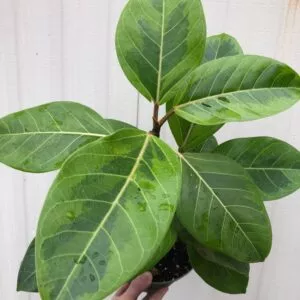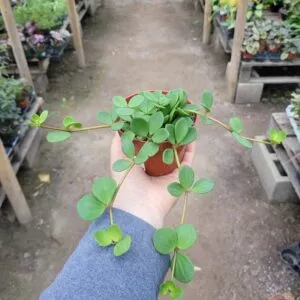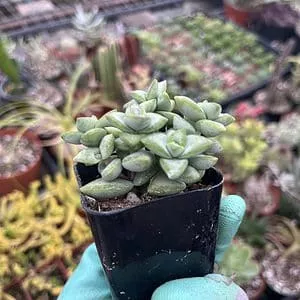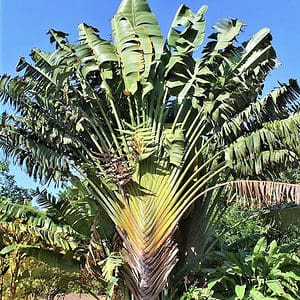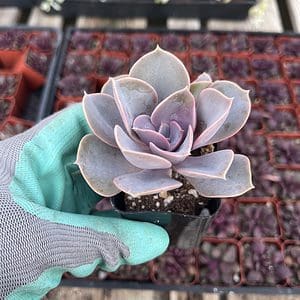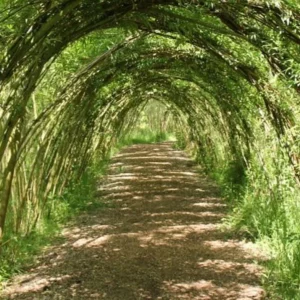No products in the cart.
Table of Contents
Nothing is more fulfilling in a hobby than caring for a bonsai tree. The word bonsai has two meanings: miniature tree or ornamental shrub. You can find different types of trees to grow as indoor bonsai trees. So, if you decide to take up the art of bonsai, choose a bonsai tree species that suits your needs and care for it with the tips here.
What Is Bonsai?

Bonsai is a Japanese art form that involves cultivating small trees or shrubs in containers, creating miniature representations of full-sized trees in nature. The word “bonsai” itself translates to “planted in a container” or “tray planting” in Japanese.
Bonsai trees are carefully pruned, shaped, and trained to maintain a small and aesthetically pleasing size. They are not genetically dwarfed plants but regular trees kept small through maintenance pruning. Bonsai is considered a form of living art.
It involves combining techniques such as pruning, wiring, and selective trimming to create a tree representing its species’ idealized form. While the art of bonsai is often associated with Japan, it has its roots in ancient China, where similar techniques were practiced.
Bonsai later spread to Japan, where it became deeply ingrained in Japanese culture and aesthetics. Bonsai trees are typically grown in shallow containers or pots that are chosen to complement the tree’s overall design.
These containers are often made of ceramic, though other materials like clay or plastic can be used. When grown indoors, these unique plants need proper drainage holes and maintenance. Bonsai can take on various styles, each with its unique characteristics.
Some common styles include formal upright, informal upright, cascade, semi-cascade, and windswept. Bonsai is often associated with patience, balance, and harmony with nature. In Japanese culture, it can symbolize a deep connection to the natural world and the passage of time.
There are selective bonsai varieties to choose including conifers, deciduous trees, and even some tropical plants. Each type has unique care requirements and characteristics. Bonsai cultivation is a hobby for enthusiasts to connect with nature and express their creativity.
Creating and maintaining these miniature living sculptures requires dedication and a deep understanding of horticultural techniques.
Bonsai Tree Care

Okay, if you’re a beginner, do not think it is as easy as Mr. Miyagi shows in Karate Kid. Still, even as a novice, one thing is that it takes dedication to care for many bonsai species.
People give up fast on these indoor plants because most species grow outdoors. But you can still find a few that you can grow inside, and two popular bonsai trees are your Ficus retusa and Fukien Tea.
You can even take a Jade plant and make it a bonsai tree. So, today, we will help you care for your bonsai trees to reach tranquillity. Plantly has got you covered.
So, let’s look at the vital things to caring for your different species. But before we start, let’s look at the two types of bonsai you can grow.
Growing Indoor Bonsai Trees

The indoor bonsai tree is a sensitive yet delicate plant. The tree needs a lot of tender, loving care. Another essential factor to consider is that it depends on your bonsai tree. Yet, the basic guidelines provided work with most bonsai tree types.
You can find fast-growing bonsai trees and even slow-growing bonsai.
Growing Outdoor Bonsai Trees

If you choose an outdoor bonsai, they are not difficult to care for, but you need to consider the type of tree you have to keep them healthy. If it is a deciduous bonsai tree, it goes into a dormant winter stage and requires cooler temperatures.
So, you cannot take some trees inside, while others depend on the type of wild tree.
Ideal Soil Mix for Bonsai

Okay, now, which soil should you use as bonsai enthusiasts? We recommend an orchard mix for outdoor and indoor plants. Hence, the soil must drain well, provide aeration, and retain water with bonsai care.
While you can buy ready bonsai mix soils, you can also make one yourself.
So, the potting mix needs to hold water to thrive between watering. Next, your bonsai tree needs good drainage to prevent root rot to keep your tree healthy. Then, the root system needs good aeration to provide oxygen for healthier roots.
Thus, will it be an organic or inorganic soil mixture? Organic potting compost comprises bark, peat, or leaf litter, and they break down over time, reducing water drainage. Hence, most bonsai potting soil has poor water absorption and a significant problem, leaving your tree thirsty.
In addition, inorganic soil contains minimal to no organic matter of fired clays, volcanic lava, or baked calcite. The potting mix absorbs less water with no nutrients but provides proper drainage and aeration.
So, what should you do? Well, you can look for bonsai soil made up of the following, depending on your specific tree, to create a miniature version:
Deciduous Tree Species
Pumice 25%
Akadama 50%
Lava rock 25%
Coniferous and Pine Tree Species
Pumice 33%
Akadama 33%
Lava rock 33%
Thus, when investing in the right bonsai soil mixture, look for ready-mixed soils with the above ingredients. Some bonsai enthusiasts even add fine gravel to the bonsai soil mixture for many trees.
Bonsai Tree Positioning
Now, to determine the right lighting spot to display your bonsai tree, it helps to know the type of tree you have. You also need to learn if it is an indoor or outdoor plant. For example, pine, spruce, and juniper bonsai are outdoor trees.

The outdoor species can also include deciduous trees, with the leaves changing with the seasons. These include elms, ginkgo, and maple trees. Your indoor bonsai trees are primarily subtropical species.
They can flourish at a stable temperature, including ficus trees, jade plants, and Hawaiian umbrella trees.
Once you determine your tree species, the rest is simple. Some general tips applied to most bonsai are as follows:
Humidity – most bonsai need humidity to keep the soil moist, and adding a humidity tray helps.
Lighting – the best is to keep your tree in an area with a lot of sunlight, depending on the species. Yet, you may find that some trees can grow in bright, indirect light to partial shade, while others prefer direct sunlight.
Positioning – to care for your tree properly, we recommend not placing your bonsai tree in direct drafts or heat.
Bonsai Tree Watering Needs

No matter what bonsai tree you have, the important thing is to check the soil moisture before watering. You can do the finger test, the chopstick method, or use a moisture meter.
If the soil is one inch deep and dry, prepare for watering. Choose suitable water except for hard water found in some taps. Add some lime for hard tap water and leave it standing overnight. Or, you can collect rainwater or use distilled water.
To ensure the whole root system is wet, frequently water your bonsai from the top until the water drains from the drainage holes. Then, leave your plant standing for a few minutes and water again after checking the soil.
You do not need to water your miniature trees every day. Just check the soil. Bonsai species differ, and your watering schedule with each tree type will vary.
Fertilizing Bonsai Trees Correctly
All bonsai trees need feeding; you can find them as solid or liquid fertilizer. Popular organic fertilizers are seaweed-based feeds, fish emulsion, or cottonseed meal.
Whether deciduous or evergreen bonsai trees, most trees need nitrogen in the growing season; the tree needs phosphorus to produce healthy flowers and fruit, while potassium helps the overall health of a small tree.
As container soil mixtures contain clay fines, they do not hold nutrients and need fertilizing regularly to make up for it. Nonetheless, growing bonsai in sandy loam soil, you need not water that much or feed your tree often.
You can determine this by looking at the bonsai trees’ leaf color and appearance. An important note is not to overfertilize your tree, as it can cause a salt burn that browns the leaves and dries out the plant and soil.
You need to provide the soil with nutrients periodically and always use half the suggested strength. Generally, you can apply a feed once a week during its growing season but refrain from feeding in the winter months to prevent new growth.
Re-potting and Choosing The Right Pot

When you repot your bonsai tree, there are two factors to consider, as seen here:
The Make of Bonsai Pot
You can find bonsai containers in extended sizes that differ from your regular plant pots. The container needs wiring holes to keep your tree fixed to the pot. You can choose from concrete, ceramic, clay, and more.
Another important thing is using metallic containers releases toxins, and we recommend using porcelain or ceramic instead. If you have mature bonsai trees, they already have years of training and adapt well to small pots.
The most crucial factor is the depth, and the pot should complement your bonsai tree fruits, bark textures, flowers, and leaves to the trunk thickness. For bonsai fruit trees, a glazed-colored pot works well.
Though evergreen trees work well with brown or gray containers, you get two types of pots: display and training. The latter works best during training until developed to re-pot in your display container.
When to Repot Your Bonsai Tree
For a beautiful bonsai, it helps to repot a small tree when it becomes pot-bound. Now, you can provide a fresh soil mixture and check the root system.
To care for bonsai trees correctly this is an important part. They are confined to small spaces with little soil, so it needs to be done often. It also depends on your tree’s species, age, and health.
Young bonsai trees need more frequent re-potting than older trees. You can transplant your tree every two years to prevent it from becoming root-bound for a vigorous grower.
On the other hand, slow-growing trees only need transplanting every five years. The best time to re-pot is when you see the bonsai buds open in spring. Then, you can prune the root mass as well.
How to Propagate Your Bonsai Tree
All you need to propagate your bonsai plant is fresh stem cuttings. The best time to do this is in spring and summer.
You can take a few cuttings when you trim or prune your tree. The stem cuttings need to be four inches long with three nodes attached. Also, always use your clippers.
Trim off the bottom leaves and cut the bottom at a 45° angle using twig shears.
Get your bonsai pot filled with the right soil mix and place the cutting in the soil about two inches deep.
You can take a straw to keep the cutting up and tie it with some twine.
Take a plastic bag to cover the container and trap moisture.
Place the cutting in a shaded spot to root and water as needed.
It should take about a month to keep the plastic bag open to provide ventilation.
Once rooted, remove the cover after five weeks, and grow as usual.
In stock In stock In stock In stock
$19.95
Sold By:
SunSoul Plants
$32.95Ficus Altissima ‘Yellow Gem’ in 6″ pot
Rated 4.87 out of 5 based on 98 customer ratings05
Sold By:
SunSoul Plants
$6.00 – $12.00
Sold By:
Plants by Stinky Boo
Peperomia Hope
Only 20 available and it’s in 2 people’s basket Rated 5.00 out of 5 based on 2 customer ratings00
Sold By:
Plants by Stinky Boo
$4.59
Sold By:
Cacti and Exotica
Crassula | String of Buttons | 2″ Pot
Rated 4.98 out of 5 based on 59 customer ratings00
Sold By:
Cacti and Exotica
$7.00
Sold By:
Painted Petals and More
Nephthytis — Arrow plants
Rated 4.78 out of 5 based on 64 customer ratings00
Sold By:
Painted Petals and More
Structural Pruning
Pruning is a fundamental technique in bonsai cultivation that helps shape and maintain the desired appearance of your bonsai tree. Here are some detailed steps and tips for pruning a bonsai tree:
Tools and Materials:
Pruning shears: Use sharp and clean pruning shears to make clean cuts without damaging the tree.
Concave cutters: These specialized bonsai tools create concave cuts that promote quicker healing and reduce scarring.
Wire cutters: Necessary for removing wires used in shaping the tree.
Jin pliers (optional): Used for creating deadwood features, like jins and shari, on the tree.
Clean cloth or disinfectant: Wipe your tools with a clean cloth or disinfectant to prevent the spread of diseases between cuts.
Know Your Objectives:
Before pruning, envision the tree’s desired shape and style. Identify which branches need to be pruned to achieve that vision.
Pruning can be done throughout the year, but the best times are usually spring for major pruning and late spring or early summer for fine-tuning.
Avoid heavy pruning during the tree’s dormant period (winter), as it may weaken the tree.
Techniques With Bonsai Plants
Maintenance Pruning: This involves regularly removing small shoots, buds, or leaves to maintain the tree’s shape and balance.
Structural Pruning: This is more significant and involves removing larger branches to improve the tree’s overall structure.
Pinching: For certain species, you can pinch off new growth with your fingers to encourage branching and reduce leaf size.
Aftercare:
Water the tree thoroughly after pruning to help it recover.
Observe the tree’s response to pruning and adjust your care routine as needed.
Apply cut paste or a similar wound-sealing compound to larger cuts to promote healing and reduce scarring.
Over time, the tree will callus and heal over the pruning wounds.
Bonsai Plant Varieties
When you look at the varieties of bonsai trees, it is mind-blowing. Still, here are some of our favorites.
Ficus benjamina

The ficus trees are popular bonsai plants for indoor growing. The care is straightforward and excellent for a beginner to grow. Still, they get injured easily, and it takes ages to heal.
Serissa japonica

The bonsai tree called the snow rose produces gorgeous flowers in early spring. You will see tons of tiny flowers blooming on the tree.
Schefflera arboricola

The dwarf umbrella tree has leaves that hang like an umbrella. The downside of this indoor bonsai tree is that the sap is toxic to animals.
Bonsai Plant Diseases and Pests
Whether you do maintenance pruning or trim your tree, always watch for the following pests.
Aphids are insects hard to see with a green or yellow color. These pests suck out the nutrients of your tree.
Mealybugs also eat away the bonsai tree leaves hiding under the foliage, making it difficult to see.
Whiteflies are also a problem and sit on the leaves, sucking away essential nutrients.
One of the best ways to treat the problem is with an insecticidal soap using a cotton ball to wipe the leaves. Or you can use a mix of isopropyl alcohol if the insecticidal soap does not help.
Other concerns with your tree are:
The leaves have colored spots and can be from a fungal infection.
The foliage is drying, looking yellow, and wilted from overwatering.
A bonsai tree that looks swollen in the bark can be trimmed or pruned. When the wound does not heal after pruning, it can get an infection causing it to swell.
Frequently Asked Questions
Watering frequency depends on the type of bonsai and environmental conditions. Generally, water when the soil starts to feel slightly dry, but avoid letting it completely dry.
Well-draining soil with good aeration is essential. Bonsai-specific soil mixes or a blend of Akadama, pumice, and lava rock work well.
Most bonsai trees prefer bright, indirect sunlight. However, specific light requirements may vary by species.
Regular pruning is essential to maintain the bonsai’s shape and size. Trim back new growth to maintain the desired form.
Observe for signs of pests or diseases and treat them promptly. Proper watering and good hygiene can help prevent many issues.
Repotting is usually done every 1-3 years, depending on the tree’s age and growth. Spring is often the best time for repotting.
Whether you want to buy, sell or simply reach out to other plant enthusiasts, Plantly is the right place to be!
In stock In stock In stock In stock
$349.99
Sold By:
Oasis Bamboo Tropical Nursery
Ravenala Madagascariensis live 7ft+ plant
Sold By:
Oasis Bamboo Tropical Nursery
$30.00
Sold By:
Southern Oak Exotics
Chlorospatha Species Ex Ecuador
Sold By:
Southern Oak Exotics
$4.50
Sold By:
Cacti and Exotica
Echeveria—Perle von Nurnberg
Rated 4.98 out of 5 based on 59 customer ratings00
Sold By:
Cacti and Exotica
Free Shipping
$12.98 – $14.96
Sold By:
CZ Grain
Living Willow Structure – Trees – Iconic and Eye Appealing, Wedding Alter, Art
Only 884 available and it’s in 2 people’s basket Rated 4.60 out of 5 based on 156 customer ratings00
Sold By:
CZ Grain
